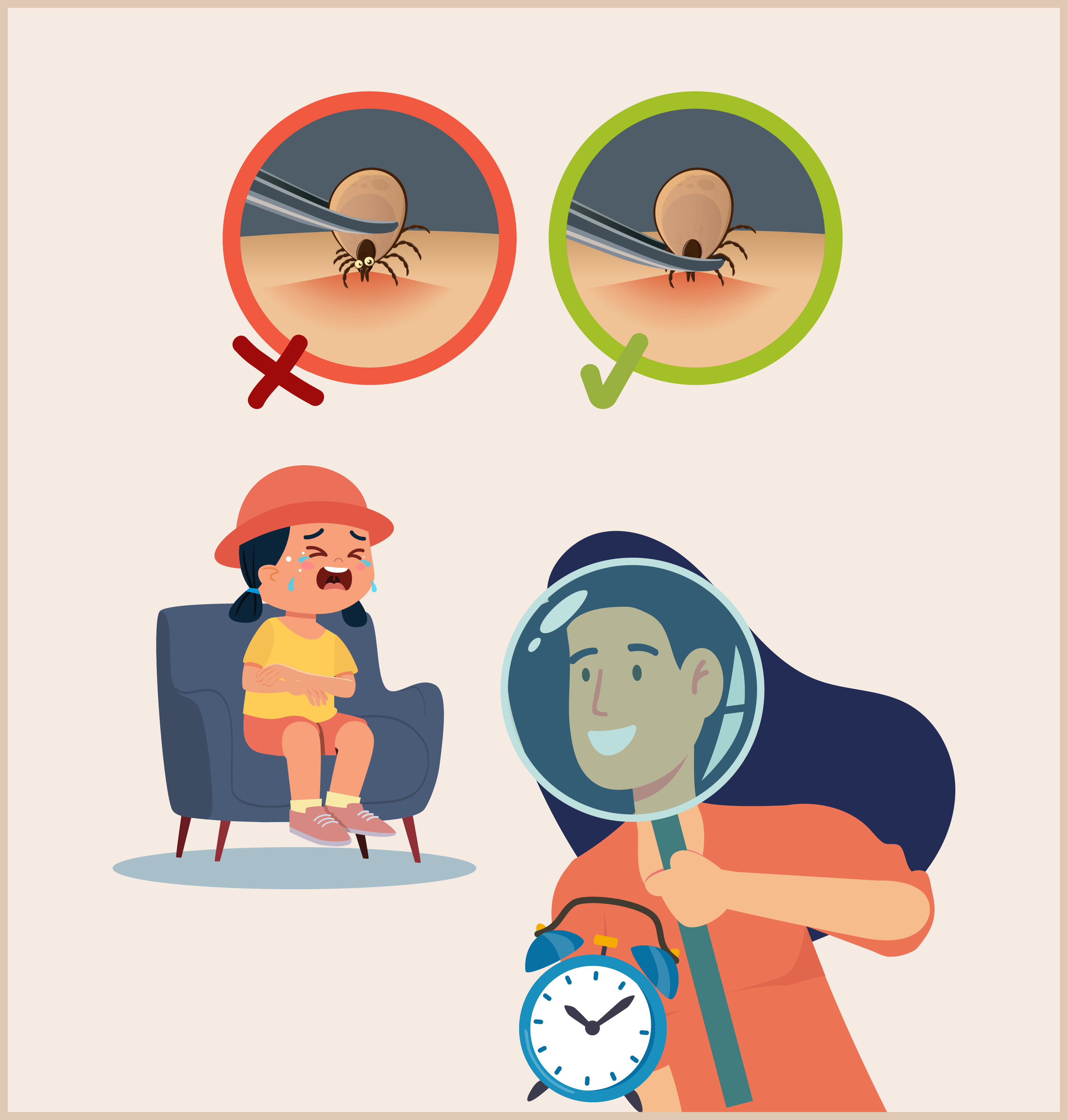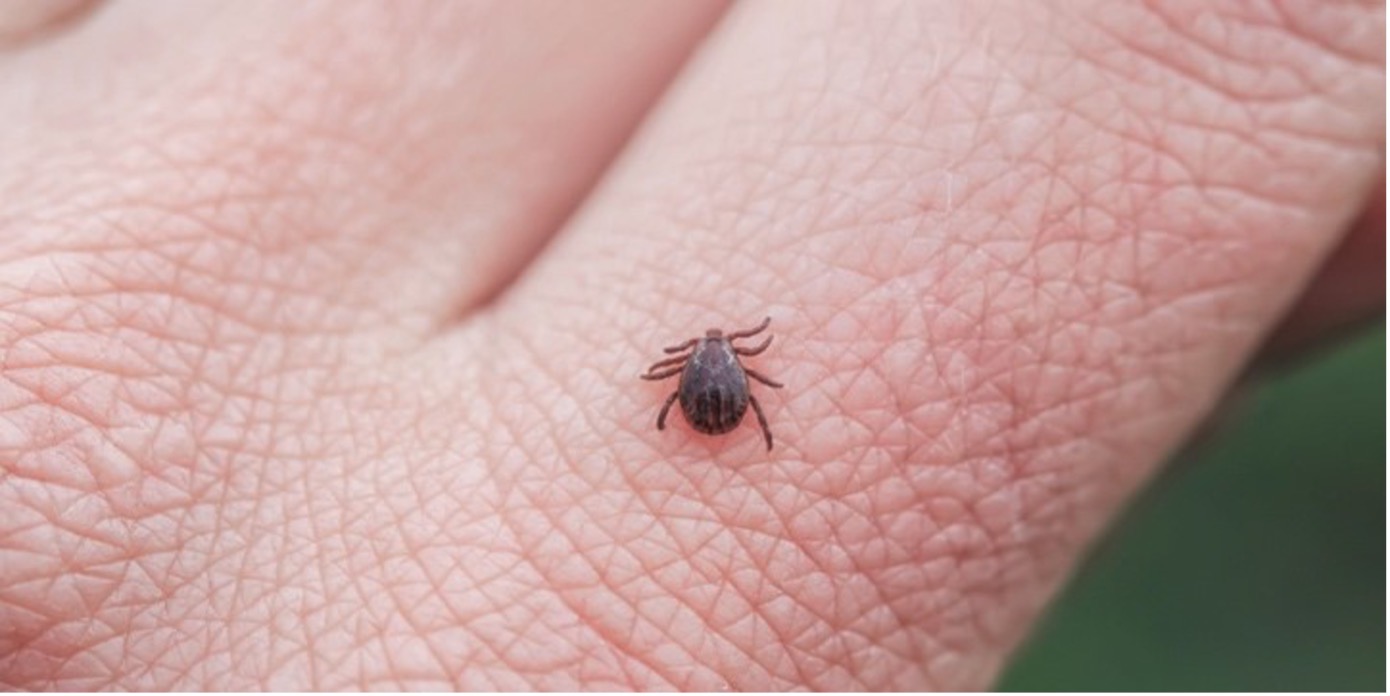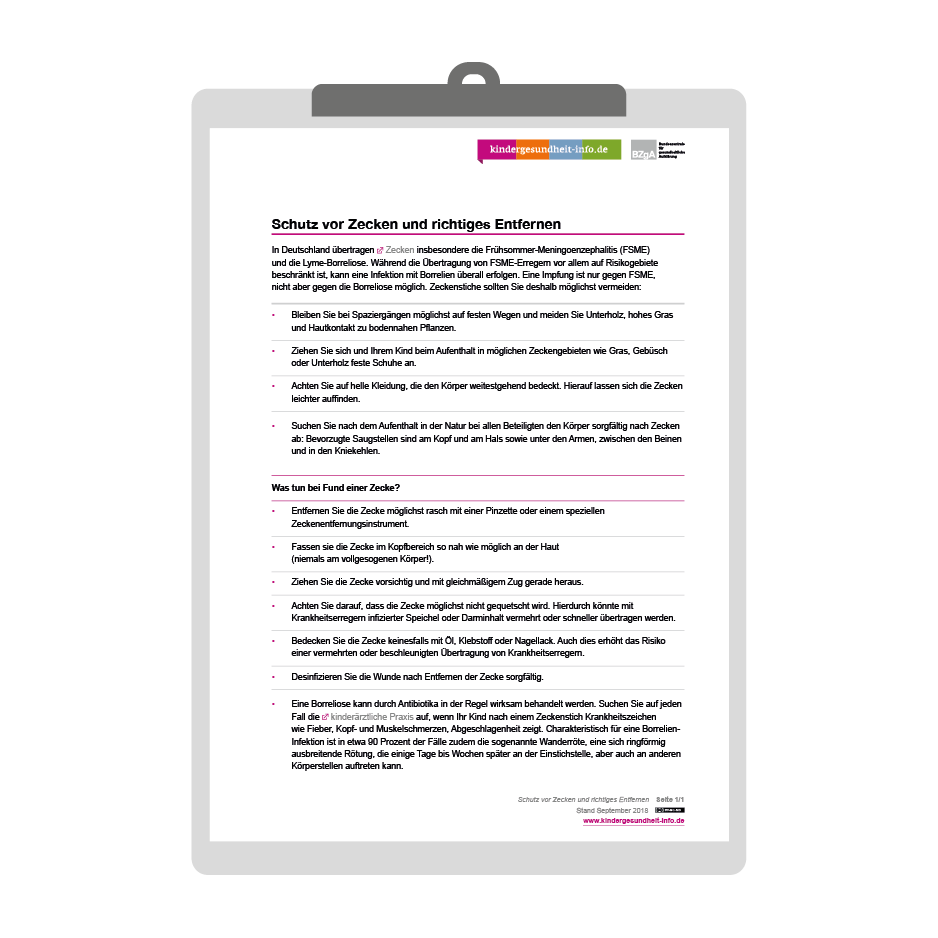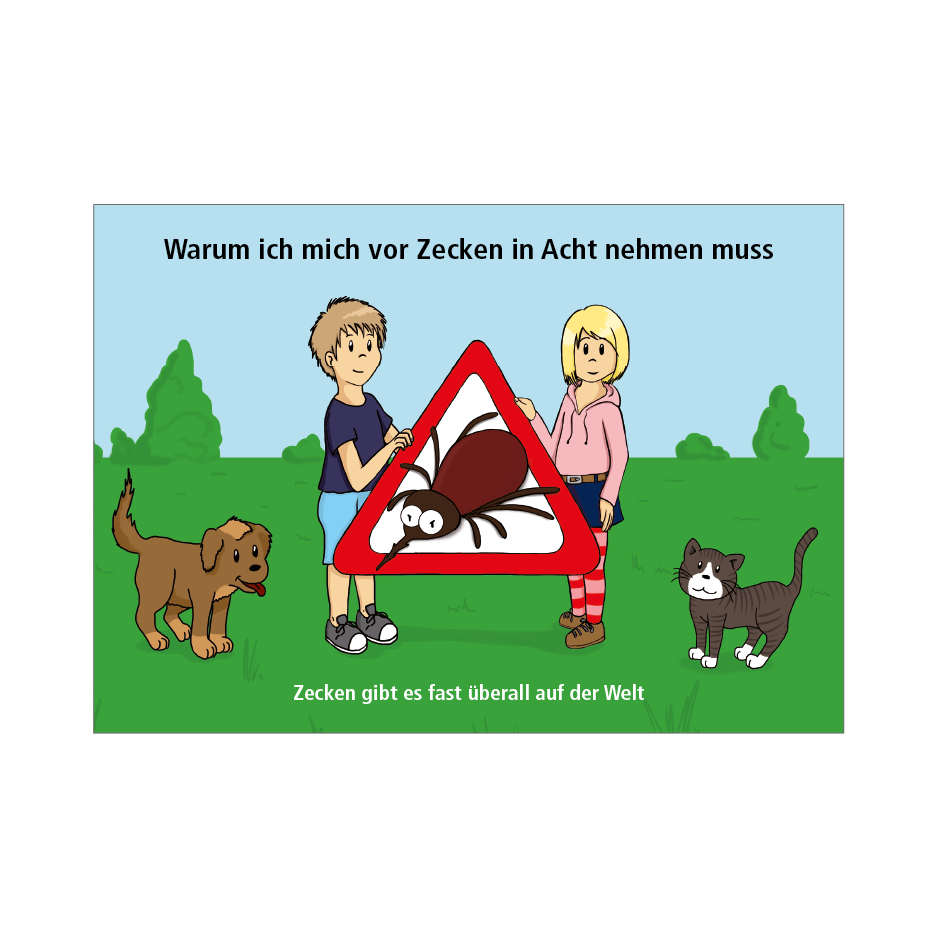
- Remove the tick as quickly as possible using tick tweezers, a tick card or tweezers.
- Important: Avoid crushing or twisting the tick. This could cause the tick's body to burst and bacteria could enter your child's body.
- Grab the tick by the head, as close to the skin as possible, and slowly pull the tick out.
- It is best to mark the bite site with a ballpoint pen and observe whether there are any skin changes such as redness at the site over the next few days. If this is the case, or if you have a fever or pain as a result of a tick bite, you should consult a doctor.





